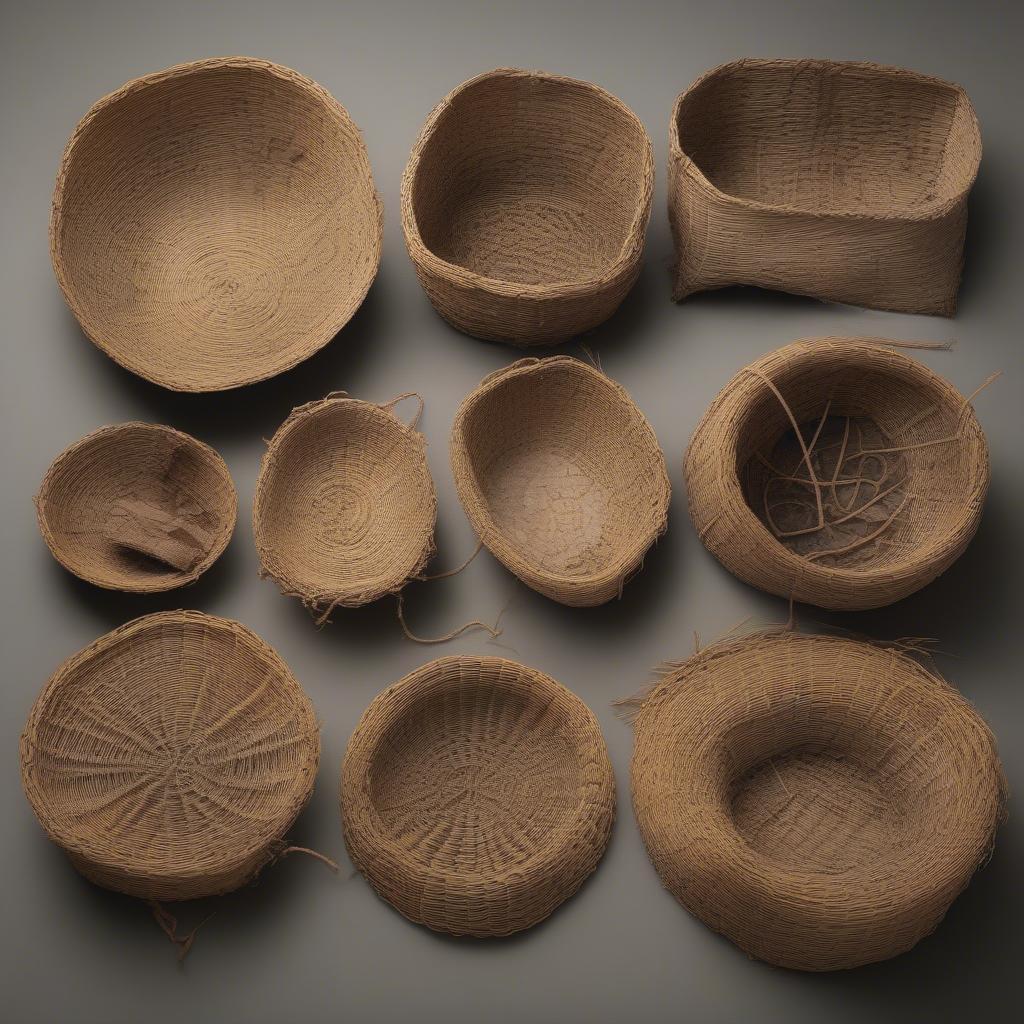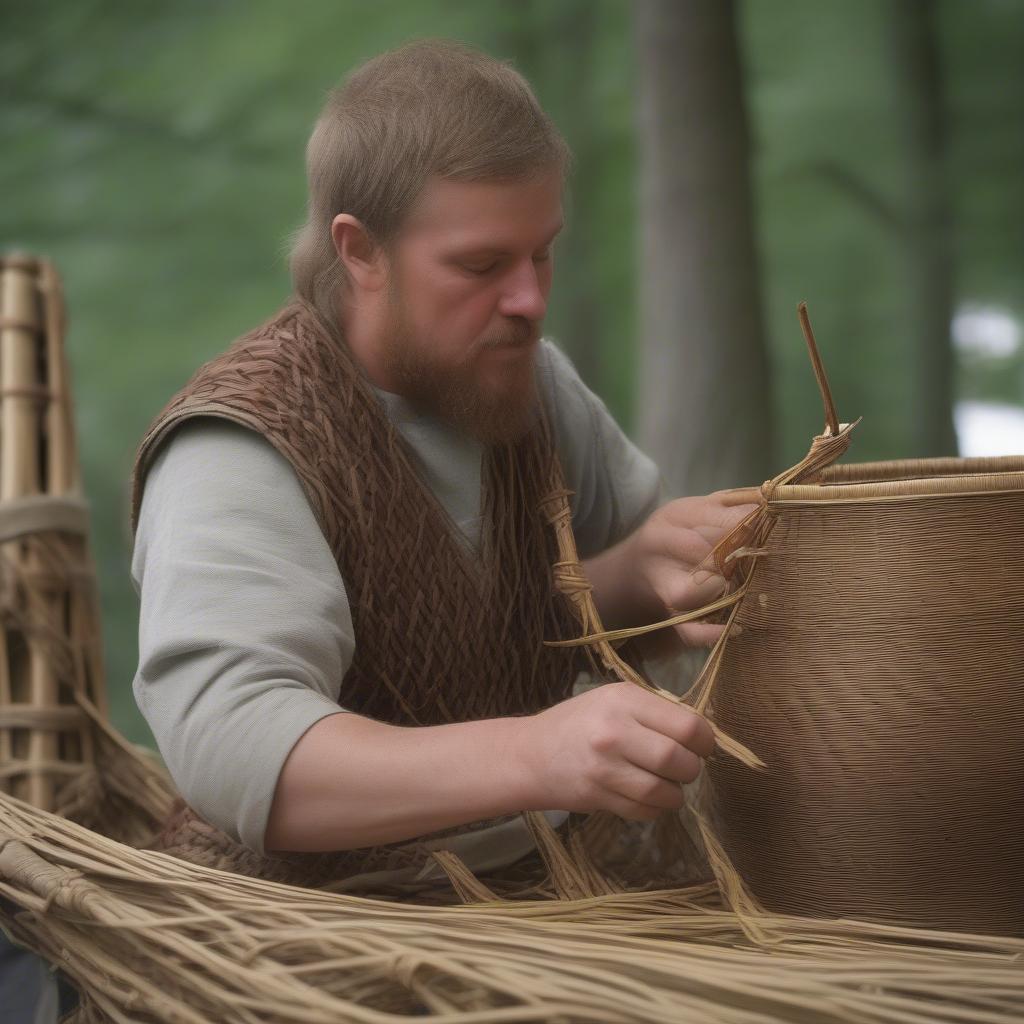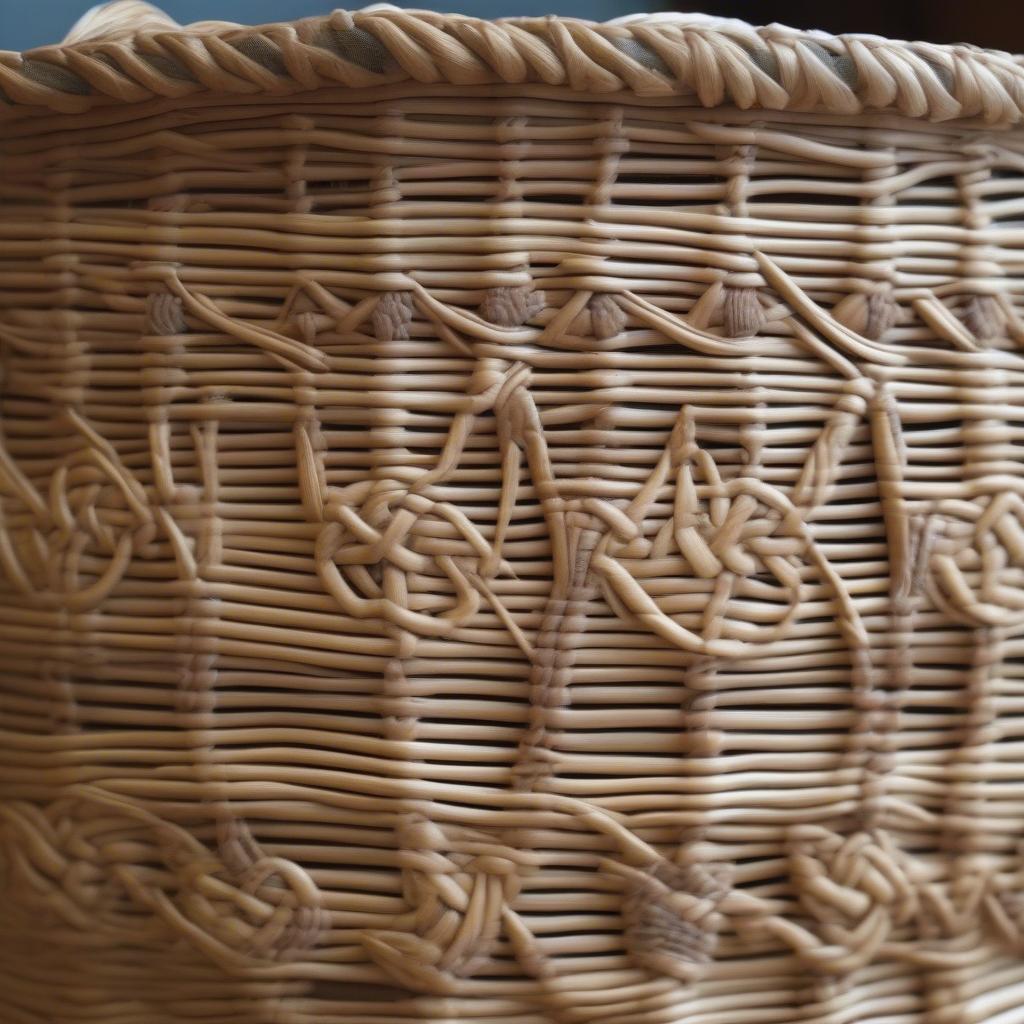Basket Weaving
Viking Basket Weaving: A Legacy of Craft and Culture
Viking Basket Weaving, a testament to ingenuity and artistry, played a vital role in Norse society. From practical storage solutions to intricate decorative pieces, these baskets reflect the resourcefulness and craftsmanship of the Vikings. This article delves into the history, techniques, and cultural significance of Viking basket weaving, exploring its enduring legacy.
Exploring the History of Viking Basket Weaving
Evidence suggests that basket weaving was a common practice among the Vikings, with baskets serving various purposes in daily life. Archaeological finds, including fragments of baskets and tools used in their creation, offer glimpses into the materials and techniques employed by Viking weavers. These baskets weren’t merely functional; they often incorporated decorative elements, showcasing the artistic sensibilities of their creators.
 Archaeological Finds of Viking Basket Fragments
Archaeological Finds of Viking Basket Fragments
Basket weaving was crucial for storage and transportation in a society reliant on farming, fishing, and trade. Baskets held food, tools, and personal belongings, proving invaluable during voyages and daily activities. They were likely made using readily available materials like reeds, grasses, and willow branches.
Viking Basket Weaving Techniques and Materials
While specific details about Viking basket weaving techniques are limited due to the perishable nature of the materials, it’s reasonable to assume that they employed techniques similar to those used by other cultures during the same period. These techniques likely included twining, coiling, and plaiting, creating sturdy and functional baskets.
 Viking Basket Weaving Reenactment
Viking Basket Weaving Reenactment
The Vikings primarily used natural, locally sourced materials for their basketry. Willow, birch bark, reeds, and grasses were readily available and well-suited for weaving. The choice of material likely depended on the intended use of the basket, with stronger materials preferred for carrying heavier loads.
The Cultural Significance of Viking Baskets
Beyond their practical applications, Viking baskets held cultural significance. They represented resourcefulness and skill, reflecting the importance of craftsmanship in Viking society. The decorative elements woven into some baskets suggest they also served an aesthetic purpose, potentially used in rituals or as status symbols.
“Basket weaving was not just a craft; it was an integral part of Viking life,” says Dr. Astrid Bjornstad, a renowned expert in Norse archaeology. “These baskets tell us a story about their resourcefulness, their artistry, and their connection to the natural world.”
 Viking Basket with Decorative Elements
Viking Basket with Decorative Elements
Viking Basket Weaving Today: A Resurgence of Interest
Today, there is a renewed interest in Viking crafts, including basket weaving. Modern artisans are exploring traditional techniques and materials, creating beautiful and functional baskets inspired by Viking designs. This revival helps preserve a valuable part of Viking heritage and offers a glimpse into the lives of these skilled craftspeople.
“The resurgence of interest in Viking basket weaving is inspiring,” comments Bjorn Holm, a contemporary basket weaver specializing in Viking-inspired designs. “It allows us to connect with our ancestors and appreciate their remarkable skills.”
Conclusion
Viking basket weaving stands as a testament to the ingenuity and artistry of the Vikings. From practical storage solutions to objects of cultural significance, these baskets offer valuable insights into Viking society. By exploring the history, techniques, and materials used in Viking basket weaving, we can appreciate the enduring legacy of this ancient craft. Learning about Viking basket weaving allows us to connect with a rich history and appreciate the ingenuity of our ancestors.
FAQ
-
What materials did Vikings use for basket weaving?
Primarily, they used locally sourced materials like willow, birch bark, reeds, and grasses. -
What techniques did Vikings use in basket weaving?
While exact details are scarce, evidence suggests they likely used techniques like twining, coiling, and plaiting. -
What was the cultural significance of Viking baskets?
Baskets represented resourcefulness and skill, reflecting the importance of craftsmanship in Viking society, and some may have served aesthetic or ritualistic purposes. -
Is Viking basket weaving still practiced today?
Yes, there is a renewed interest in Viking crafts, including basket weaving, with modern artisans exploring traditional techniques and materials. -
Where can I learn more about Viking basket weaving?
Many resources are available online and in libraries, including books, articles, and videos demonstrating Viking-inspired basket weaving techniques.
Need help with basket weaving supplies or want to learn more? Contact us in Hanoi, Vietnam or Tech Avenue, Suite 12, San Francisco, CA 94105, USA. Our customer service team is available 24/7.
